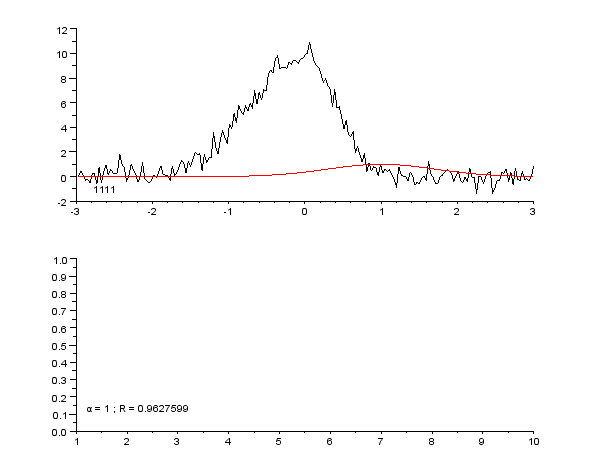|
Zero Coupon Swap
In finance, a zero coupon swap (ZCS) is an interest rate derivative (IRD). In particular it is a linear IRD, that in its specification is very similar to the much more widely traded interest rate swap (IRS). General description A zero coupon swap (ZCS)Pricing and Trading Interest Rate Derivatives: A Practical Guide to Swaps J H M Darbyshire, 2017, is a derivative contract made between two parties with terms defining two 'legs' upon which each party either makes or receives payments. One leg is the traditional fixed leg, whose cashflows are determined at the outset, usually defined by an agreed fixed rate of interest. A second leg is the traditional floating leg, whose payments at the outset are forecast but subject to change and dependent upon future publication of the interest rate inde ... [...More Info...] [...Related Items...] OR: [Wikipedia] [Google] [Baidu] |
Interest Rate Derivative
In finance, an interest rate derivative (IRD) is a derivative whose payments are determined through calculation techniques where the underlying benchmark product is an interest rate, or set of different interest rates. There are a multitude of different interest rate indices that can be used in this definition. IRDs are popular with all financial market participants given the need for almost any area of finance to either hedge or speculate on the movement of interest rates. Modeling of interest rate derivatives is usually done on a time-dependent multi-dimensional lattice ("tree") or using specialized simulation models. Both are calibrated to the underlying risk drivers, usually domestic or foreign short rates and foreign exchange market rates, and incorporate delivery- and day count conventions. The Heath–Jarrow–Morton framework is often used instead of short rates. Types The most basic subclassification of interest rate derivatives (IRDs) is to define linear and n ... [...More Info...] [...Related Items...] OR: [Wikipedia] [Google] [Baidu] |
Bootstrapping (finance)
In finance, bootstrapping is a method for constructing a ( zero-coupon) fixed-income yield curve from the prices of a set of coupon-bearing products, e.g. bonds and swaps. A ''bootstrapped curve'', correspondingly, is one where the prices of the instruments used as an ''input'' to the curve, will be an exact ''output'', when these same instruments are valued using this curve. Here, the term structure of spot returns is recovered from the bond yields by solving for them recursively, by forward substitution: this iterative process is called the ''bootstrap method''. The usefulness of bootstrapping is that using only a few carefully selected zero-coupon products, it becomes possible to derive par swap rates (forward and spot) for ''all'' maturities given the solved curve. Methodology As stated above, the selection of the input securities is important, given that there is a general lack of data points in a yield curve (there are only a fixed number of products in the market). Mo ... [...More Info...] [...Related Items...] OR: [Wikipedia] [Google] [Baidu] |
FTSE MTIRS Index
The FTSE MTIRS Indices are designed to accurately move in direct correlation to OTC Interest Rate Swaps market with a total of 45 indices covering the USD curve from 2 years to 30 years including spreads and butterflies. FTSE MTIRS Indices account for changes to both fixed and floating rates and are rebalanced daily. The value of the FTSE MTIRS Indices change with the NPV (Net Present Value) changes and is mathematically rebalanced daily to ensure that the indices represent periods out of spot and remains at constant maturity. Composite market maker prices are used to calculate the FTSE MTIRS Index series and are used for rebalancing, supplying perfect correlation to OTC Interest Rate Swaps and effectively tracks fixed for floating Interest rates enabling the tracking of OTC Interest rate Swap exposure. Structure *To buy the MTIRS index mirrors—receive fixed and pay floating. *To sell the MTIRS index mirrors—pay fixed and receive floating. *MTIRS index positions are worth: ... [...More Info...] [...Related Items...] OR: [Wikipedia] [Google] [Baidu] |
Notional Amount
The notional amount (or notional principal amount or notional value) on a financial instrument is the nominal or face amount that is used to calculate payments made on that instrument. This amount generally does not change and is thus referred to as '' notional.'' Explanation Contrast a bond with an interest rate swap: * In a bond, the buyer pays the principal amount at issue (start), then receives coupons (computed off this principal) over the life of the bond, then receives the principal back at maturity (end). * In a swap, no principal changes hands at inception (start) or expiry (end), and in the meantime, interest payments are computed based on a notional amount, which acts ''as if'' it were the principal amount of a bond, hence the term ''notional principal amount'', abbreviated to ''notional''. In simple terms, the notional principal amount is essentially how much of an asset or bonds a person owns. For example, if a premium bond were bought for £1, then the notional pri ... [...More Info...] [...Related Items...] OR: [Wikipedia] [Google] [Baidu] |
Derivative (finance)
In finance, a derivative is a contract between a buyer and a seller. The derivative can take various forms, depending on the transaction, but every derivative has the following four elements: # an item (the "underlier") that can or must be bought or sold, # a future act which must occur (such as a sale or purchase of the underlier), # a price at which the future transaction must take place, and # a future date by which the act (such as a purchase or sale) must take place. A derivative's value depends on the performance of the underlier, which can be a commodity (for example, corn or oil), a financial instrument (e.g. a stock or a bond), price index, a price index, a currency, or an interest rate. Derivatives can be used to insure against price movements (Hedge (finance)#Etymology, hedging), increase exposure to price movements for speculation, or get access to otherwise hard-to-trade assets or markets. Most derivatives are price guarantees. But some are based on an event or p ... [...More Info...] [...Related Items...] OR: [Wikipedia] [Google] [Baidu] |
Over-the-counter (finance)
Over-the-counter (OTC) or off-exchange trading or pink sheet trading is done directly between two parties, without the supervision of an exchange. It is contrasted with exchange trading, which occurs via exchanges. A stock exchange has the benefit of facilitating liquidity, providing transparency, and maintaining the current market price. In an OTC trade, the price is not necessarily publicly disclosed. OTC trading, as well as exchange trading, occurs with commodities, financial instruments (including stocks), and derivatives of such products. Products traded on traditional stock exchanges, and other regulated bourse platforms, must be well standardized. This means that exchanged deliverables match a narrow range of quantity, quality, and identity which is defined by the exchange and identical to all transactions of that product. This is necessary for there to be transparency in stock exchange-based equities trading. The OTC market does not have this limitation. Parties may ... [...More Info...] [...Related Items...] OR: [Wikipedia] [Google] [Baidu] |
Bank For International Settlements
The Bank for International Settlements (BIS) is an international financial institution which is owned by member central banks. Its primary goal is to foster international monetary and financial cooperation while serving as a bank for central banks. With its establishment in 1930 it is the oldest international financial institution. Its initial purpose was to oversee the settlement of World War I war reparations. The BIS carries out its work through its meetings, programmes and through the Basel Process, hosting international groups pursuing global financial stability and facilitating their interaction. It also provides banking services, but only to central banks and other international organizations. The BIS is based in Basel, Switzerland, with representative offices in Hong Kong and Mexico City. History Background International monetary cooperation started to develop tentatively in the course of the 19th century. An early case was a £400,000 loan in gold coins, in 1825 ... [...More Info...] [...Related Items...] OR: [Wikipedia] [Google] [Baidu] |
FAS 133
Launched prior to the millennium, (and subsequently amended) FAS 133 ''Accounting for Derivative Instruments and Hedging Activities'' provided an "integrated accounting framework for derivative instruments and hedging activities." FAS 133 Overview Statements of Financial Accounting Standards No. 133, ''Accounting for Derivative Instruments and Hedging Activities'', commonly known as FAS 133, is an accounting standard issued in June 1998 by the Financial Accounting Standards Board (FASB) that requires companies to measure all assets and liabilities on their balance sheet at “fair value”. This standard was created in response to significant hedging losses involving derivatives years ago and the attempt to control and manage corporate hedging as risk management not earnings management. All derivatives within the scope of FAS133 must be recorded at fair value as an asset or liability. Hedge accounting may be applied if there is hedge documentation and gains and losses in the v ... [...More Info...] [...Related Items...] OR: [Wikipedia] [Google] [Baidu] |
IFRS
International Financial Reporting Standards, commonly called IFRS, are accounting standards issued by the IFRS Foundation and the International Accounting Standards Board (IASB). They constitute a standardised way of describing the company's financial performance and position so that company financial statements are understandable and comparable across international boundaries. They are particularly relevant for companies with shares or securities publicly listed. IFRS have replaced many different national accounting standards around the world but have not replaced the separate accounting standards in the United States where US GAAP is applied. History The International Accounting Standards Committee (IASC) was established in June 1973 by accountancy bodies representing ten countries. It devised and published International Accounting Standards (IAS), interpretations and a conceptual framework. These were looked to by many national accounting standard-setters in developing natio ... [...More Info...] [...Related Items...] OR: [Wikipedia] [Google] [Baidu] |
Financial Instruments: Recognition And Measurement
Finance refers to monetary resources and to the study and discipline of money, currency, assets and liabilities. As a subject of study, is a field of Business Administration wich study the planning, organizing, leading, and controlling of an organization's resources to achieve its goals. Based on the scope of financial activities in financial systems, the discipline can be divided into personal, corporate, and public finance. In these financial systems, assets are bought, sold, or traded as financial instruments, such as currencies, loans, bonds, shares, stocks, options, futures, etc. Assets can also be banked, invested, and insured to maximize value and minimize loss. In practice, risks are always present in any financial action and entities. Due to its wide scope, a broad range of subfields exists within finance. Asset-, money-, risk- and investment management aim to maximize value and minimize volatility. Financial analysis assesses the viability, stability, and profi ... [...More Info...] [...Related Items...] OR: [Wikipedia] [Google] [Baidu] |
Best Fit
Curve fitting is the process of constructing a curve, or mathematical function, that has the best fit to a series of data points, possibly subject to constraints. Curve fitting can involve either interpolation, where an exact fit to the data is required, or smoothing, in which a "smooth" function is constructed that approximately fits the data. A related topic is regression analysis, which focuses more on questions of statistical inference such as how much uncertainty is present in a curve that is fitted to data observed with random errors. Fitted curves can be used as an aid for data visualization, to infer values of a function where no data are available, and to summarize the relationships among two or more variables. Extrapolation refers to the use of a fitted curve beyond the range of the observed data, and is subject to a degree of uncertainty since it may reflect the method used to construct the curve as much as it reflects the observed data. For linear-algebraic analy ... [...More Info...] [...Related Items...] OR: [Wikipedia] [Google] [Baidu] |
KPMG
KPMG is a multinational professional services network, based in London, United Kingdom. As one of the Big Four accounting firms, along with Ernst & Young (EY), Deloitte, and PwC. KPMG is a network of firms in 145 countries with 275,288 employees, affiliated with KPMG International Limited, a private English company limited by guarantee. The name "KPMG" stands for "Klynveld Peat Marwick Goerdeler". The initialism was chosen when KMG (Klynveld Main Goerdeler) merged with Peat Marwick in 1987. KPMG has three lines of services: financial audit, tax, and advisory. Its tax and advisory services are further divided into various service groups. In the 21st century, various parts of the firm's global network of affiliates have been involved in regulatory actions as well as lawsuits. History Early years and mergers In 1816, Robert Fletcher started working as an accountant and in 1839 the firm he worked for changed its name to Robert Fletcher & Co. William Barclay Peat join ... [...More Info...] [...Related Items...] OR: [Wikipedia] [Google] [Baidu] |




